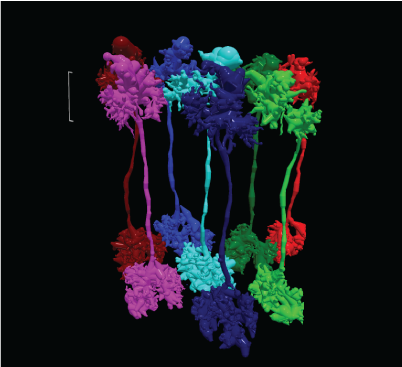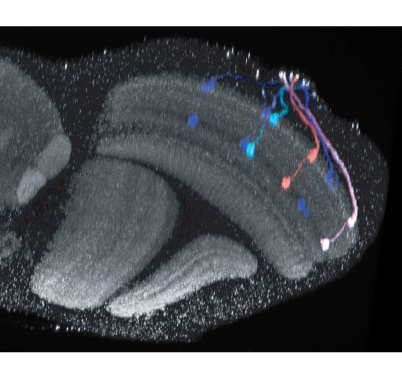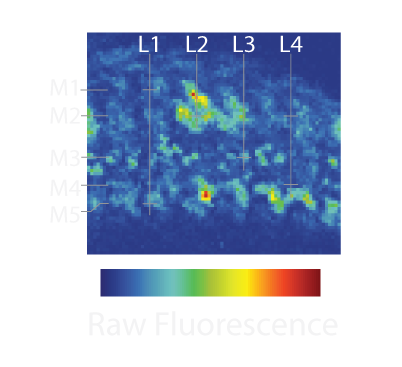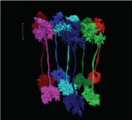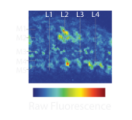Pairing scientists with engineers and technical specialists, project teams embody Janelia’s collaborative culture and allow us to tackle problems that are unattainable by individual investigators or by incremental progress. These synergistic teams are purposefully flexible and responsive, and thus able to move quickly to meet new research needs and opportunities: a team science approach.
Within the Project Team ecosystem at Janelia, we pursue Large and Small Projects that have specific and targeted goals and produce resources that benefit scientists at Janelia and beyond. We also support Consortia that bring together experts in diverse areas to develop novel ways of answering biological questions, often leveraging technology developed at Janelia.
Large Projects
- CellMap aims to demonstrate the power of FIB-SEM data to catalyze biological discoveries.
- FlyEM (Electron Microscopic Reconstructing of the Drosophila Nervous System) aims to develop a fully detailed, cellular- and synaptic-resolution map of the central nervous system of Drosophila melanogaster.
- FlyLight (Optical Mapping of the Fly Nervous System) aims to construct a digital atlas of the Drosophila nervous system with “cell-type-specific resolution” at light-level resolution as well as a collection of “cell-type-specific” driver lines.
- GENIE (Genetically-ENcoded Indicator and Effector) aims to develop the next generation of genetically-encoded calcium, voltage, and neurotransmitter sensors with improved temporal precision and increased fluorescence.
- MouseLight (Mouse Projections and Connections) aims to generate axonal collateral maps of individual neurons across the entire mouse brain using high-speed, high-resolution light microscopy.
Small Projects
- FIB-SEM Technology pioneers 3D isotropic high resolution volume Electron Microscopy (vEM) technology to enable discoveries in connectomics, tissue biology, and cell biology.
- Fly Descending Interneuron aims to anatomically characterize and create cell-type specific driver lines for all ~350 descending interneuron cell types and to understand the role these cells play in sensory-guided behavioral circuits.
- Fly Functional Connectome is using optogenetics to probe the synaptic connections of the Drosophila nervous system with a goal of creating an atlas of neural connections.
- Fly-eFISH airms to describe aspects of Drosophila melanogaster neural communication beyond what can be currently learned from connectomes derived from electron microscopic images.
- FuncEWOrm is building the first cellular and molecular blueprint of an entire organism by uniting cutting-edge multimodal data across time.
- Tool Translation Team (T3) promotes the development of novel molecular tools and escort their application to biological questions. T3 serves to bridge the technical gaps between molecular tool builders and their users.
Past Projects
- COSEM (Cell Organelle Segmentation in Electron Microscopy) aims to automatically identify all intracellular substructures within isotropic electron microscopy datasets.
- TIC (Transcription Imaging Consortium) (2006 - 2017) developed new methods to study the assembly, dynamics and functional regulation of the transcription machinery in live cells at the resolution of a single molecule.
- FlyTEM aimed to image and assemble the entire CNS of two fruit flies, one from a male and the other from a female, and provided software tools to extract skeletons of neuroanatomical structures in these datasets. Tracing and imaging remain an important part of the science at Janelia.
- NeuroSeq characterized the transcriptional state of defined neuron types of biological interest in both the fly and the mouse. The assays and techniques remain an important part of the science at Janelia and now reside in Quantitative Genomics.
- Larval Olympiad (2012-2015) identified and assayed neuron classes in fruit fly larva that are involved in sensory processing, motor pattern generation, and sensory-motor transformations.
- Fly Olympiad (2009-2012): Developed high-throughput quantitative behavioral assays and conducted a neurogenic screen of ~2,500 Generation 1 Gal4 driver lines. The assays and techniques remain an important part of the science at Janelia and now reside in Project Technical Resources.
Support
To make our team science succeed at scale, Project Teams closely collaborate with Janelia’s Support Teams and are directly supported by the Project Team Technical Resources.
Featured Work
MouseLight
NeuronBrowser—an interactive web platform to explore, search, filter and visualize single neuron reconstructions.
FlyEM
Cortex commands the performance of skilled movement (Publication)
GENIE
Fast and sensitive GCaMP calcium indicators for imaging neural populations (Publication)

